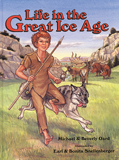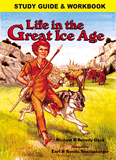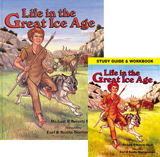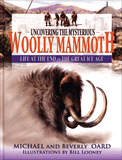Life in the Great Ice Age, Lesson 8
Chapter 6, Part 2
These lessons are geared for younger students. Many lessons will, however, have activities for the older student.
Introduction:
These lessons are geared for younger students. Many lessons will, however, have activities for the older student. Parents/teachers will easily find answers to questions in the text, and should prepare themselves by reading the stated pages prior to having the student read the weekly assignment. If a child is not able to read yet, this is still a good book, and parents/teachers may read to the student. We have testimonies from parents of children as young as four years old who have enjoyed listening to the story in this book. There is truth to be learned from this story and that is the purpose of these lessons.
We have now finished the first set of lessons—those from the actual story. You may want to reread the story to your children/students. The next set of lessons will be a little more detailed, and while they may appear repetitious, there will be new truths to learn in these lessons as well.
Read:
Pages 56–61 (Chapter 6, Part 2)
Questions to answer:
- What methods were used to store and prepare food?
- In your own words, explain why remains of both plant- and meat-eaters have been found in the La Brea Tar Pits.
- Neanderthals have been thought of as a “missing link.” Why? List three reasons why Neanderthals should be considered human.
- What is a “land bridge”? What caused land bridges to appear?
Words to know
- Smilodon
- Missing link
- Cro-Magnon
- Chinook
Activities:
- A project for older students: Write a short paper discussing the creationist view of the origin/disappearance of Neanderthal Man (see p. 59).
- Note to parents: “The Land Bridge” section (pp. 60–61) provides a good opportunity for a geography lesson. Using a map of the world (current) walk your students through the various areas described on those pages and discuss with your children how various animals could have “moved” from the Middle East (where Noah’s Ark landed) to the various continents they now inhabit. Remind your children that these are possibilities. We have no written record of these migrations, but the geological record indicates that these assumptions are reasonable.
Recommended Resources

Answers in Genesis is an apologetics ministry, dedicated to helping Christians defend their faith and proclaim the good news of Jesus Christ.
- Customer Service 800.778.3390
- © 2024 Answers in Genesis




